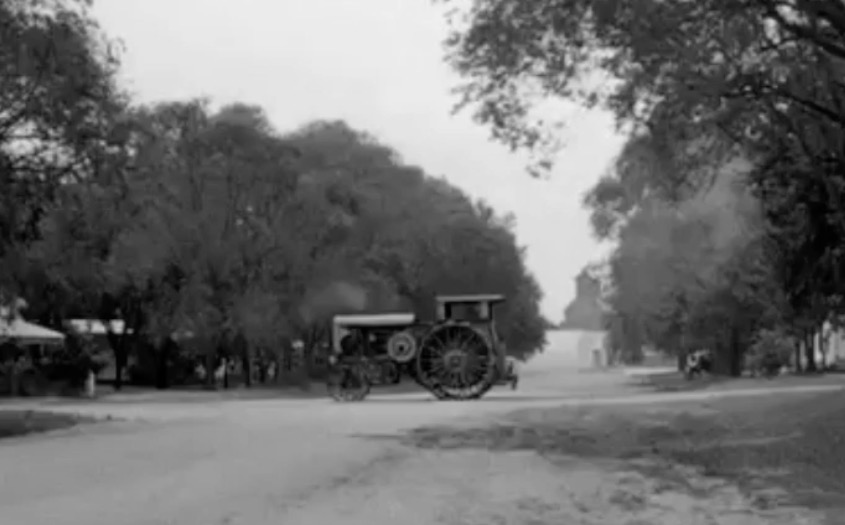
Dorrance
History
The Founding and Growth of Dorrance, Kansas
Russell County’s first white settlers arrived in the late 1860s, and by the 1870s, communities began to flourish. In June 1867, the Kansas Pacific Railroad reached the area that would become Dorrance, bringing an influx of German, English, Irish, and other immigrants. These newcomers played a significant role in the town’s modest growth by 1870. The town site, strategically located along the railroad, was named after Kansas Pacific Railroad Superintendent O.B. Dorrance.
Between 1874 and 1877, the county’s population grew steadily. Though settlers arrived individually rather than in large groups, new farms and homes steadily dotted the prairie. Temporary officials were appointed to oversee a special election on September 9, 1872, which established the county’s first government. The U.S. Post Office in Dorrance was established on July 9, 1883, and on April 7, 1910, Dorrance was officially incorporated as a third-class city. City officers and councilmen were elected shortly after, on April 19, 1910. Nestled in the heart of Kansas’ Post Rock County, Dorrance was primarily home to farm families of modest means.
Early 20th Century Prosperity
By the early 1900s, Dorrance had become a thriving community. Two banks emerged in 1904—the Citizens State Bank and the Dorrance State Bank—both instrumental in fueling the town’s growth. To meet the growing demand for supplies, a native limestone building known as the Rieff Building was constructed in 1911. The building housed a general store on the first floor and an opera house on the second, becoming a cornerstone of the community.
Dorrance’s bustling business district included a hotel, blacksmith shop, livery barn, hardware stores, doctor’s offices, banks, a lumberyard, grocery stores, a butcher shop, drugstore, dry goods store, and a newspaper. Between 1910 and 1940, Dorrance served as the primary supplier of goods and services for the eastern portion of Russell County.
The Rise and Fall of Dorrance’s Banks
For a brief period in the early 1900s, Dorrance was home to two banks. The Dorrance State Bank was chartered on July 21, 1904, with $10,000 in capital and W.D. Jellison as president. The Citizens State Bank followed shortly after, chartered on August 3, 1904, with the same capital and C.J. Poor as president. By November 1904, the two banks consolidated, with W.D. Jellison as president and a new stone building constructed in 1905 to house the merged entity. Initially named the Citizens State Bank, it was renamed the Dorrance State Bank on April 8, 1915, following a formal resolution by its stockholders.
The Dorrance State Bank operated successfully for decades, but like many banks across the nation, it fell victim to the economic turmoil of the Great Depression. By the early 1930s, as farmers struggled and the economy worsened, banks began failing at an alarming rate. Nationally, bank failures skyrocketed, with 744 banks collapsing in the first 10 months of 1930 alone. By 1933, depositors had lost $140 billion due to bank failures.
In March 1933, newly inaugurated President Franklin D. Roosevelt declared a national “bank holiday,” temporarily closing banks to stabilize the financial system. His famous words, “The only thing we have to fear is fear itself,” resonated across the country. The Dorrance State Bank, however, could not recover. It became insolvent on January 11, 1933, and the State Bank Commissioner appointed Charles W. Johnson as receiver to oversee its liquidation. The bank’s assets were eventually sold in 1936, marking the end of an era for Dorrance’s financial institution.
The Bank Building’s Legacy
After the bank’s closure, the building found new life. It served as a telephone switchboard facility for the Dorrance Telephone Company, operated first by John Fritschen and later by Pete and Opal Fritschen. As technology advanced, the switchboard became obsolete, and in December 1973, the property was sold to William and Arleen Huff, who converted the front portion into a small grocery store. The building changed hands several more times, serving as an attorney’s office and later a barbershop, until Tony Mahoney purchased it in 2007 with the goal of restoring it to its early 20th-century appearance.
The restoration process spanned over a decade. The building was listed on the State and National Historical Registers, and a Historical Trust Fund grant helped repair significant structural damage. Using the Halbe photo collection as a guide, the interior was meticulously reconstructed to reflect its original 1900s design. The restoration was finally completed by Memorial Day 2021, preserving a vital piece of Dorrance’s history for future generations.